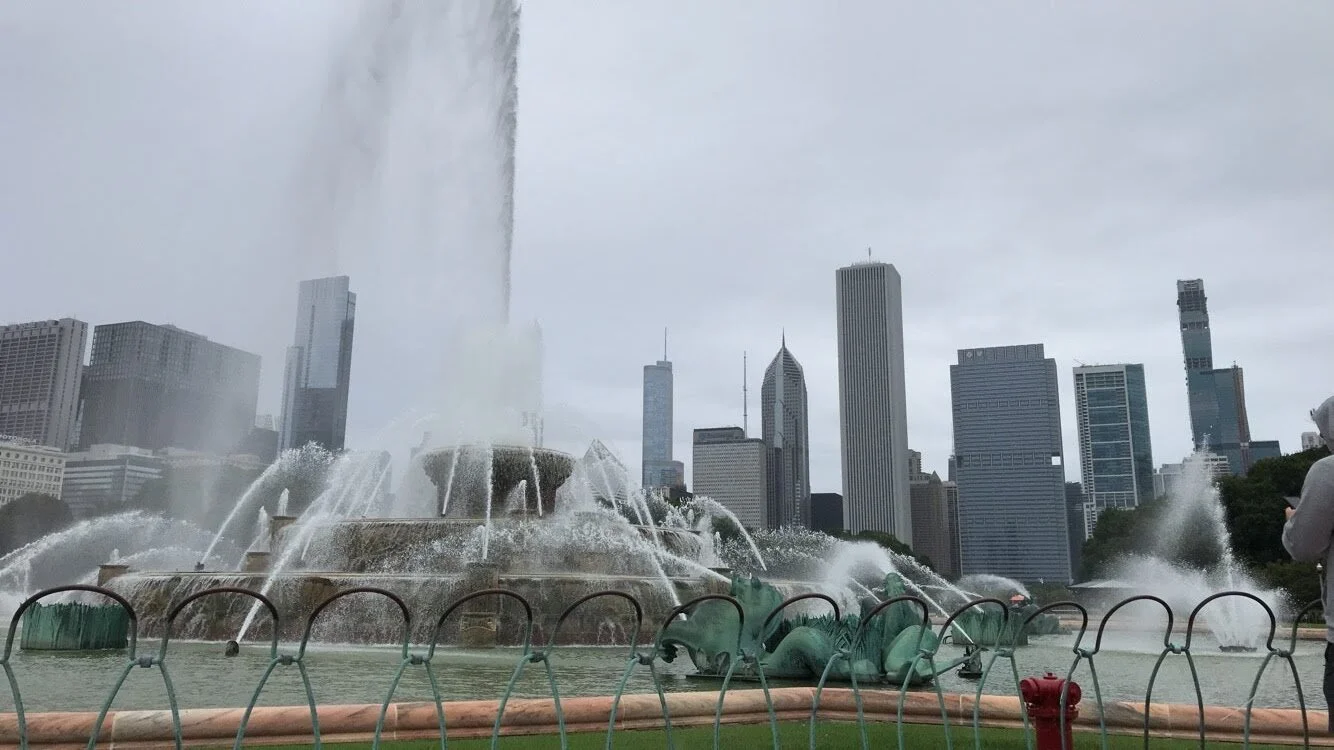Chicago
As it has been a week since all of us third year architecture students got back from our Chicago trip, I thought I’d talk a little about it. The Windy City, with a population of 2.7 million and totaling 9.5 million in the Chicago metropolitan area, is the country’s third largest city. Located in the Midwest region, the Illinois city lies on the west coast of the freshwater Lake Michigan. Chicago is also one of the most visited cities in America and it’s not hard to see why. With Millennium Park, Navy Pier, the Magnificent Mile, and countless other attractions, Chicago is truly an icon of the country.
A view of Chicago from Adler Planetarium
We had so much fun exploring the city and seeing what it had to offer, I’m sure many of us fell in love with it. We were also fascinated with the fact that Chicago is considered the Architecture Capital of the World, which is rather fitting that we were there. One of our favorite activities on the trip was the architectural boat tour. We had an excellent tour guide telling us all about the history of the city as well as interesting facts about certain buildings. As the tour came to an end and the sun had set, we were able to see the city from Lake Michigan as it twinkled on the horizon. We were also lucky enough to experience dazzling fireworks that night on the lake that were put on only that night by the Adler Planetarium.
The view we got on our boat tour
Now, as Chicago is a booming metropolis and a central hub for many industries, I wanted to find out more about the environmental impact of the city as that is something I am passionate about. I was pleased to find out that Chicago is the largest city in America leading the way on renewable energy. According to the article that I looked at by the B1M linked here, it analyzed the city’s outlined plan for the future that puts Chicago on their way to becoming the country’s largest city to commit to 100% renewable energy by 2040. Their first step they are taking is retrofitting the more than 900 public buildings to be more energy efficient by 2025. The city’s plans then go on to target other CO2 emitters like all other buildings and the transportation infrastructure.
There are many steps to take in order to reach Chicago’s ambitious goal, but they have many measures in place to make sure it’s a smooth transition. A majority of the city’s residential buildings are over 50 years old so it will be large undertaking in order to retrofit those buildings with updated insulation and modern heating and cooling systems. The City of Chicago realizes this and is providing financial help to select businesses and homeowners. They also realize the impact of transportation on their carbon footprint so the Chicago Transit Authority is committing themselves to upgrading their over 1,800 busses to electric ones by 2040.
A view of the city in front of Buckingham Fountain
As Chicago’s plans outline cutting energy consumption, they also plan on getting their energy from more environmentally friendly sources. Currently, around 80% of the city’s power still comes from coal and nuclear plants, but efforts are being made to change that. Being true to its name, the Windy City is hoping to capitalize on the excess of wind that blows across the lake by looking into an array of off shore wind turbines on Lake Michigan. Many structures throughout the city are also embracing photovoltaic panels to harness the power of the sun.
With all of this and more, Chicago is insuring their spot in the future as being one of the nations green superpower cities. As many urban areas around the world are making the smart move to renewable energy, I believe Chicago made the right choice in leading the way in America. I look forward to keeping up to date on the city’s increased efforts to achieve their goal as well as following green efforts in other countries across the globe.



